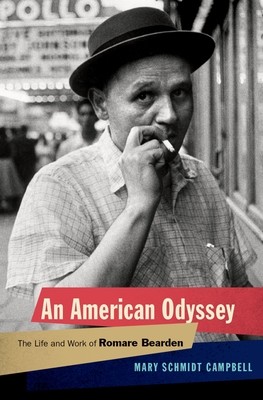
- We will send in 10–14 business days.
- Author: Mary Schmidt Campbell
- Publisher: Oxford University Press, USA
- Year: 2018
- Pages: 464
- ISBN-10: 0195059093
- ISBN-13: 9780195059090
- Format: 16.3 x 23.6 x 3.6 cm, kieti viršeliai
- Language: English
- SAVE -10% with code: EXTRA
Reviews
Description
By the time of his death in 1988, Romare Bearden was most widely celebrated for his large-scale public murals and collages, which were reproduced in such places as Time and Esquire to symbolize and evoke the black experience in America. As Mary Schmidt Campbell shows us in this definitive, defining, and immersive biography, the relationship between art and race was central to his life and work -- a constant, driving creative tension. Bearden started as a cartoonist during his college years, but in the later 1930s turned to painting and became part of a community of artists supported by the WPA. As his reputation grew he perfected his skills, studying the European masters and analyzing and breaking down their techniques, finding new ways of applying them to the America he knew, one in which the struggle for civil rights became all-absorbing. By the time of the March on Washington in 1963, he had begun to experiment with the Projections, as he called his major collages, in which he
tried to capture the full spectrum of the black experience, from the grind of daily life to broader visions and aspirations.
EXTRA 10 % discount with code: EXTRA
The promotion ends in 23d.00:57:19
The discount code is valid when purchasing from 10 €. Discounts do not stack.
- Author: Mary Schmidt Campbell
- Publisher: Oxford University Press, USA
- Year: 2018
- Pages: 464
- ISBN-10: 0195059093
- ISBN-13: 9780195059090
- Format: 16.3 x 23.6 x 3.6 cm, kieti viršeliai
- Language: English English
By the time of his death in 1988, Romare Bearden was most widely celebrated for his large-scale public murals and collages, which were reproduced in such places as Time and Esquire to symbolize and evoke the black experience in America. As Mary Schmidt Campbell shows us in this definitive, defining, and immersive biography, the relationship between art and race was central to his life and work -- a constant, driving creative tension. Bearden started as a cartoonist during his college years, but in the later 1930s turned to painting and became part of a community of artists supported by the WPA. As his reputation grew he perfected his skills, studying the European masters and analyzing and breaking down their techniques, finding new ways of applying them to the America he knew, one in which the struggle for civil rights became all-absorbing. By the time of the March on Washington in 1963, he had begun to experiment with the Projections, as he called his major collages, in which he
tried to capture the full spectrum of the black experience, from the grind of daily life to broader visions and aspirations.


Reviews